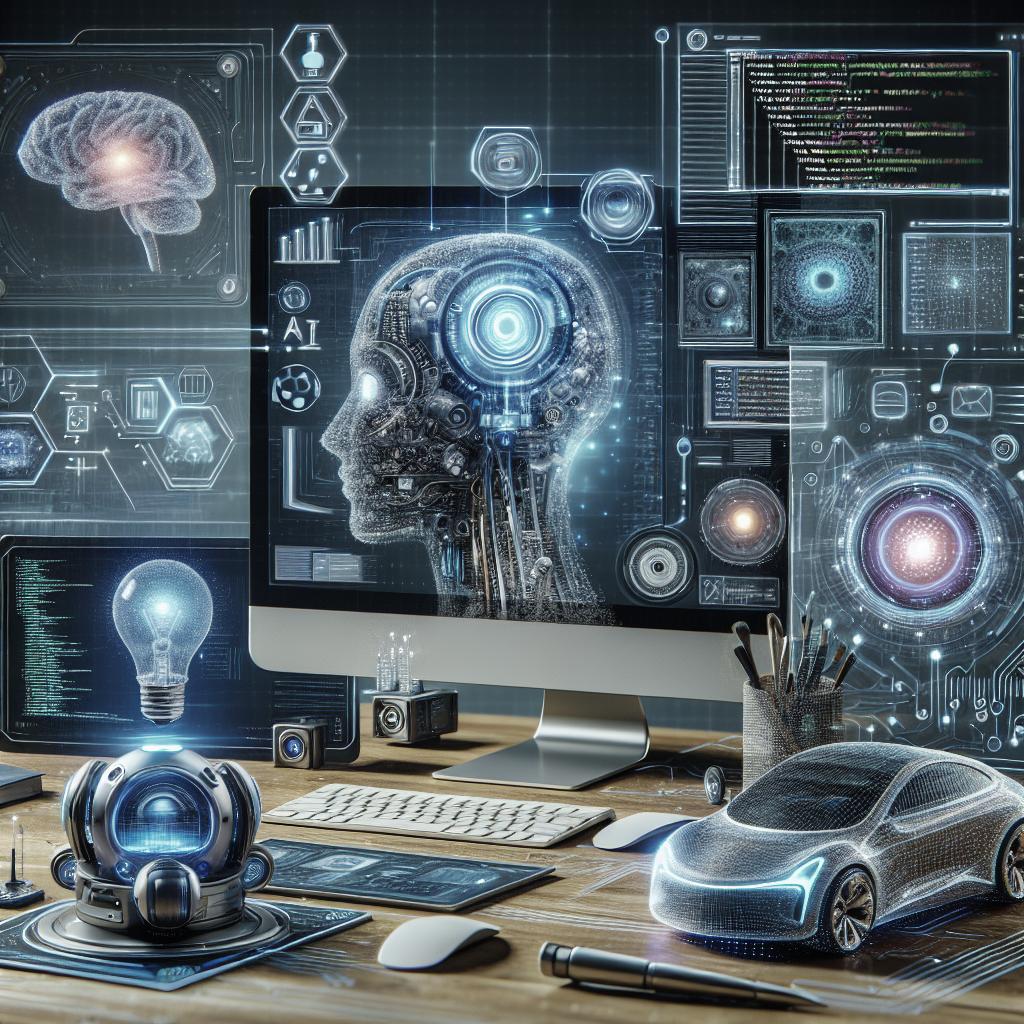“`html
Optimize Your Computer’s Performance: Tips and Tricks
Is your computer not performing at its best? Enhancing your PC’s performance isn’t just about making it faster; it’s about achieving smoother operations and optimized functionality. In today’s tech-driven world, a sluggish computer can be a hindrance to productivity and everyday tasks. This guide covers everything from uninstalling unnecessary software to upgrading hardware components like RAM and SSDs. Dive into our comprehensive tips to see significant improvements in speed, security, and overall user experience.
Uninstall Crapware
The first step to boosting your computer’s efficiency is getting rid of unnecessary software, often referred to as “crapware.” These are pre-installed programs that you rarely use, but they consume precious system resources. You can start by heading to your system’s control panel and checking the list of installed programs.
Once there, identify software you’ve never used or those that were pre-installed by the manufacturer. Follow the guided uninstallation steps for each program to remove them from your system. Simplifying the software library on your computer will invariably lead to a more responsive operating system.
Limit Startup Processes
Another technique to enhance performance is to limit startup processes. Many applications automatically set themselves to start when your computer boots, which can delay startup times significantly. Access the task manager by pressing Ctrl + Shift + Esc and navigate to the ‘Startup’ tab.
Here, you can disable applications that don’t need to run at startup. Be cautious not to disable essential system processes. A streamlined startup process can lead to faster boot times, ensuring that your computer is ready for action more quickly.
Clean Up Your Disk
A cluttered hard drive can significantly slow down your computer’s performance. Regularly cleaning up your disk helps in freeing up space and improves efficiency. Windows users can make use of the built-in Disk Cleanup tool to clean temporary files, system files, and empty the recycle bin.
Moreover, consider organizing your files and deleting old or duplicate files. Moving bulky files to an external storage device is another effective solution. Keeping your disk clean not only optimizes performance but also prolongs the lifespan of your hard drive.
Add More RAM
If sluggish performance persists, consider upgrading your computer’s RAM (Random Access Memory). More RAM allows your computer to handle more tasks simultaneously, improving speed and performance in memory-intensive tasks. This is particularly useful if you often have multiple applications open or use software that requires considerable memory.
Determine the correct type and capacity of RAM compatible with your computer before purchasing. Installation can vary between desktop and laptop models, often requiring professional assistance to ensure compatibility and proper configuration.
Install an SSD Startup Drive
One transformative upgrade for any computer is replacing the traditional hard disk drive (HDD) with a solid-state drive (SSD) for faster boot-ups and quicker access to data. SSDs use flash memory to store data, offering speed and reliability advantages over HDDs.
Installing an SSD as your startup drive can reduce load times for your operating system significantly, and applications run smoother with faster data retrieval. You’ll need to clone your existing hard drive content onto your new SSD to make the transition seamless, a process usually supported by software provided with SSDs.
Check for Viruses and Spyware
Malware, including viruses and spyware, can greatly degrade your computer’s performance. It’s crucial to consistently scan your computer using a trusted antivirus program. Regular updates and scans help identify threats and keep them at bay.
Consider enabling real-time protection features offered by reputable antivirus software, ensuring you’re shielded against new and emerging threats. Maintaining robust security against malware is a fundamental aspect of optimizing computer performance.
Change Power Mode to Best Performance
Modern operating systems often offer different power modes to balance performance with energy consumption. Switching your computer’s power settings to “Best performance” can provide a noticeable boost in speed and system responsiveness.
Adjust the settings within your system’s control panel or settings menu. This is particularly suggested for workstation scenarios where maximum performance is preferred over battery longevity or reduced power consumption.
Run Troubleshooters
When facing persistent performance issues, using built-in troubleshooters can help diagnose and resolve underlying problems. Operating systems like Windows offer troubleshooters for various components, including hardware, network, and system maintenance.
Access these tools through the control panel or settings, and follow the instructions to identify and potentially auto-correct issues. Troubleshooters simplify the troubleshooting process and can quickly eliminate performance impediments.
Recommended by Our Editors
Our editors suggest regularly updating your system drivers and ensuring your operating system is current. Keeping software up-to-date helps guarantee compatibility and improves system stability, further optimizing performance.
Meticulous attention to these small but critical elements can collectively contribute to maintaining a top-performing computer.
Change Appearance in Performance Options
Aesthetic elements like animations, shadows, and visual effects consume system resources. Adjusting these settings can lighten the load on your hardware. Navigate to the system properties menu and access the “Performance Options” settings.
Change the settings to “Adjust for best performance” to turn off or minimize visual effects. Your system may not look as polished, but the performance gains can be considerable, especially on systems with limited graphics capabilities.
Turn Off Search Indexing
Search indexing speeds up file searches within your system but at the cost of system resources. Disabling search indexing can free up resources, especially in systems with limited capacity.
To turn off indexing, right-click on the drive you want to change, select properties, and uncheck the option that allows files on this drive to have their contents indexed. While the search process might slow, your overall system performance can improve when resources are needed elsewhere.
Turn Off Tips and Notifications
Some operating systems offer tips to help users maximize their experience. However, these tips can interrupt workflow and use system resources. You can turn off tips to improve focus and system efficiency.
Navigate to the system settings or control panel and look for ‘notifications and actions.’ From there, you can customize or disable tips and notifications to enhance performance and reduce unnecessary distractions.
For Gamers: Use Game Mode and More
Windows provides a dedicated Game Mode that optimizes CPU and GPU usage. Activating Game Mode can enhance performance by dedicating more system resources to gaming tasks, reducing background activity.
Additional gaming enhancements such as updating graphic drivers, setting the refresh rate, and optimizing in-game settings can contribute to a better gaming experience—combining hardware and software tweaks results in an optimized gaming setup.
Our Top-Rated Windows PCs
Consider reviewing our top-rated Windows PCs for the latest models offering optimal performance. Investing in a new system with cutting-edge specifications might provide a fresh start and address persistent hardware limitations.
Our recommendations focus on balancing performance, durability, and value, delivering systems that meet diverse needs, from daily computing to demanding professional applications.
Like What You’re Reading?
If you found these tips helpful, explore our additional guides and articles to further improve your digital experience. Stay informed about the latest trends and technologies by subscribing to our newsletter.
Engage with our community by leaving comments, sharing your own hacks, or requesting topics you’d like us to cover. We value your input and strive to bring content that enhances your tech journey.
About Michael Muchmore
Michael Muchmore is a senior technology analyst with a deep understanding of consumer electronics. His passion for guiding users through technology’s evolving landscape makes him a trusted source for tech advice. Michael’s insightful articles help readers unlock the full potential of their devices.
His expertise encompasses hardware reviews, software solutions, and practical tips for optimizing everyday technology use. Connect with him through our website to follow his latest analysis and recommendations.
Summary of Main Points
| Optimization Strategy | Description |
|---|---|
| Uninstall Crapware | Remove unnecessary pre-installed software to free up resources. |
| Limit Startup Processes | Disable non-essential applications from starting up to improve boot time. |
| Clean Up Your Disk | Utilize disk cleanup tools and organize files to reduce clutter. |
| Add More RAM | Upgrade RAM to enhance multi-tasking capabilities and speed. |
| Install an SSD Startup Drive | Replace HDD with SSD for faster boot and data access times. |
| Check for Viruses | Use antivirus software to protect against threats and improve performance. |
| Change Power Mode | Set power settings to ‘Best performance’ for maximum efficiency. |
| Run Troubleshooters | Utilize system troubleshooters to identify and fix issues. |
| Change Appearance Options | Disable visual effects for better system performance. |
| Turn Off Search Indexing | Free up resources by disabling search indexing on limited systems. |
| Turn Off Tips | Increase focus and system resources by disabling tips and notifications. |
| For Gamers: Game Mode | Enhance gaming performance by using Game Mode and other optimizations. |
“`


